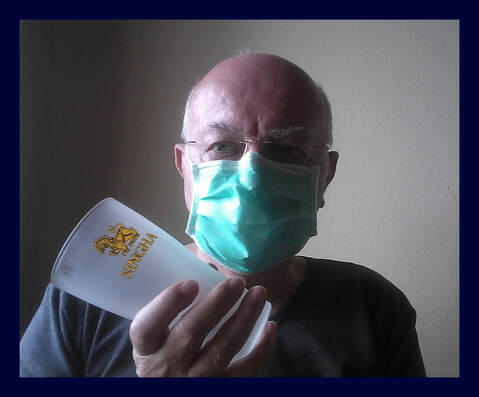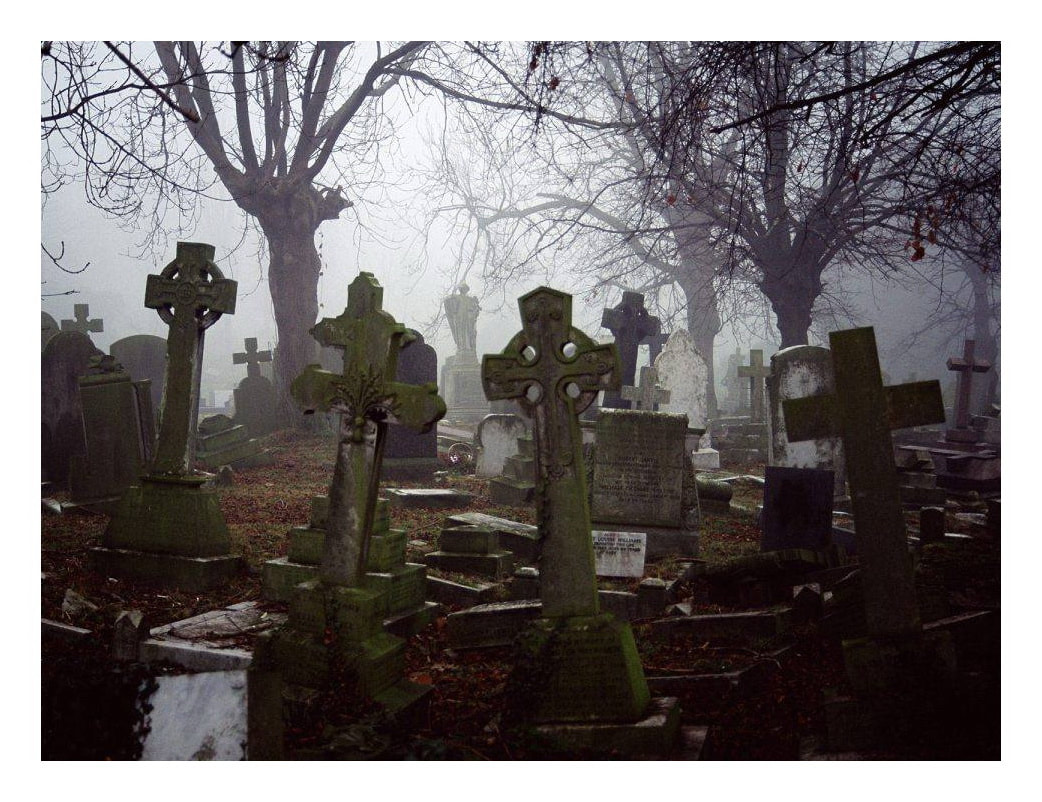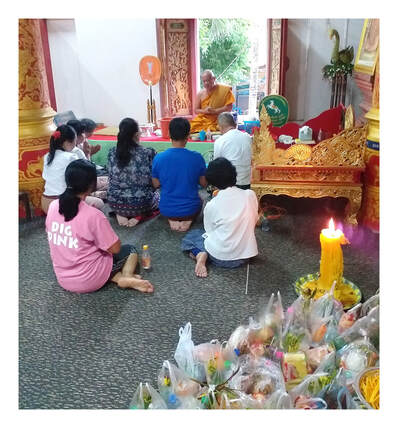|
THERE IS NO VERIFIABLE CASE FOR LIFE AFTER DEATH
I was disgusted this week to read that a conservative Christian theology teacher in the USA had posted online, “I morn for Ruth Bader Ginsburg. A Jew called by HIS name who did not receive her KING. She is in ETERNAL torment. ‘Rest in peace’ she will not be doing. … This is a hard core fact. There is NO other way to enter heaven but by Jesus Christ.” She went on, “…she will burn in hell for the sin of rejecting Jesus.” I was shocked into reconsidering two questions: (1) what has happened to Christian theology? (2) Is it respectful to admit that Justice Ginsburg’s physical life has ended? Every religion insists there is life after death. Sometimes the argument is based on testimony from those who have experienced “near death.” A previous generation was fascinated with the new science of parapsychology about messages from beyond. Before the Age of Enlightenment the declarations of Christian theologians and of authorities on the Bible were sufficient. Something about us is still alive after we die – that is the nearly universal testimony of the most profound thinkers in history and of the wisdom keepers of every ethnic community ever studied. So, it is with considerable care that I propose one of several arguments that when we die we stay dead forever. The purpose of this is to consider its potential effect on theology and religion because I contend that it need not be the ultimate purpose of religion to prove we are immortal. If CONSCIOUSNESS IS AN ELECTRO-CHEMICAL PROCESS consciousness ends when our electro-chemical processes end. That is, consciousness has no independent existence. All contemporary world religions postulate that something goes on after a person dies. This “thing” is usually called a soul. Twentieth century theologians began to identify “soul” with mind or personality. Many contemporary religions invest this soul with a capacity to continue after death. Based on Persian concepts, theistic religions describe realms of existence after death as heaven and hell. In those places the deceased are conscious of their past actions and understand their present states are a result of those deeds. Popular Buddhist faith perpetuates vivid concepts of hell. Popular Christian faith has largely consigned those ideas to antiquity in favor of the notion of an ongoing consciousness and ability to be reunited with predecessors in an afterlife. These results would be impossible if all consciousness is thought, all thought is a function of brains, and brains function through electro-chemical synapses. It is now believed that those electro-chemical sparks continue for about ten minutes after a brain ceases to receive necessary oxygen through refreshed blood supply. First, stimulation ceases from sensory sources (sight, sound, touch, etc.). But then all thought ends, even (as in deep dreams) that which is independent of the senses. That is the end for a person. If this materialistic view of human life and consciousness is true, religious views of life-after-death are false. If there were SCIENTIFIC EVIDENCE FOR LIFE AFTER DEATH, that would, of course, settle the matter in favor of “going on.” After all, “The human race as a whole has refused to believe that when the brain ceases to function the mind ceases to exist.” On the whole, the argument for life after death has been along the lines “we so much want it to be so that it must be so.” Emerson declared, “The blazing evidence of immortality is our dissatisfaction with any other solution.” My first encounter with this discussion was about 60 years ago when I obtained a copy of You Will Survive After Death, by Dr. Sherwood Eddy. He was probably the most internationally distinguished person in my home town at the time. He had completed an illustrious career with the Student Volunteer Movement and the YMCA, first in South India and then throughout South Asia, the Middle East and Russia. After he retired he lived right up the street from our house. Toward the end of his life he compiled his scientific research about life after death. He was clear that he meant it literally. “When I speak of life beyond death, I mean the survival of individual, personal consciousness, with memory of the past and a personality that shall be spiritually recognizable to my friends, past and future.” [p. 3] Eddy first argued philosophically, “Because of the testimony of science to a rational and trustworthy universe I believe I shall survive physical death.” [p. 5] Then he turned to the “new science” of parapsychology. One by one he summarized the “scientific” findings of scientists in this new field. This, it turns out, was his scientific evidence. Parapsychology, briefly, was a fad during the early twentieth century based on experiences of mental telepathy, séances involving conversations with those who have died, psychic healing, and teleportation of material objects. This has been labeled a pseudoscience by various scientific societies after 1950, the year Eddy’s book came out. Many other authors have written about theories explaining why it is scientifically probable that some form of life goes on, sometimes with memory of past lives and sometimes without, as when one “merges with the cosmos” or enters the body of someone just beginning life. The end result is that none of these theories is verifiable, and they are supported largely on the assumption that due to the immense number of galaxies and universes the likelihood is there, somehow. It is tantamount to saying “Nothing is impossible so everything is possible.” One does not have to believe “nothing goes on.” Believe there is a going on if you want (as I do), or if you have experiences that convince you to believe it. But my point is “It’s not the end of any current faith system if our physical bodies just quit.” That brings us back to the only scientifically verifiable thing we know for sure: “When we die, our electro-chemical processes stop and the systems in which they operated begin deterioration that nothing can reverse.” IF THIS IS THE CASE, RELIGIONS NEED TO BE DOING SOMETHING ELSE THAN PRESCRIBING CONDITIONS FOR IMMORTALITY. There’s plenty to do.
0 Comments
Solastalgia is the sense that the place where one belongs is threatened.
The neologism, solastalgia, conflating “nostalgia, solace, and desolation” was coined by the philosopher Glenn Albrecht. I understand it first appeared in the February 2007 edition of the journal Australian Psychiatry in an article entitled “Solastalgia: The Distress Caused by Environmental Change.” My attention was drawn to this by an article in a September 13, 2020 edition of the Los Angeles Times by Julia Wick that explains, “There’s actually a word for the climate-change-induced despair you’ve been feeling.” Wick’s editorial came in the midst of catastrophic wildfires all along the West Coast of the USA and as far inland as Colorado, and in the wake of twin hurricanes that ravaged the Gulf Coast (before Sally hit Alabama just days later). Albrecht explained in 2004 that solastalgia is “manifest in an attack on one’s sense of place, in an erosion of the sense of belonging (identity) to a particular place and a feeling of distress (psychological desolation) about its transformation.” In short, it is “a form of homesickness one gets when one is still at home.” Although solastalgia has apparently been mainly used to label the anxiety people have internalized about the climate and environmental crisis, I would like to suggest it manifests itself in relation to other threats as well. An open letter I read on social media yesterday contained a passionate plea for schools to again provide socialization opportunities for young children. The mother was clear that exclusive on-line education was not working. My take-away from that letter and many similar expressions about what schools should do as they reopen, is that lots of people are waking up to the shock that COVID-19 may be with us for another school year and that even when the pandemic abates “school” will never be the same. Many things will never be the same. Church services are undergoing change. Even as in-person services more-or-less safely resume some churches have decided they need not turn off the cameras and cut off worshippers they have been serving at a distance. Some Sunday assemblies are even greater on-line than they have been in-person before the pandemic. At the same time, I think “solastalgia” describes the distress others feel at the disorientation which means “no more covered-dish dinners” when that is part of the way the church is changing. I’m on firmer ground, to say that church, school, and home are a three-part set for a lot of people; so when any of them is gone and will never be replaced, part of where one belongs has been destroyed. Solastalgia would, in such cases, be a name for the type of grief one feels. Clearly, the concern one feels about most change is milder than the anxiety one experiences when some essential part of one’s place and identity is utterly gone. It is also different from the shock one feels about one’s own impending death or the onset of a permanent disability. Solastalgia is not about one’s changing, but about one’s remaining pretty much the same in circumstances that are changing. I would like to hear from someone knowledgeable as to whether it is solastalgia that is the psychological basis for the Make America Great Again response to Donald Trump’s slogan. Is it a deep-seated fear that the country is no longer the same? Is it essentially solastalgia to feel alarmed that the country is not going to belong to “us” any more, or is that different from feeling that we no longer are going to belong to the country? No matter. It’s something deep and psychological that motivates a fight-or-flee response when a neighborhood undergoes racial change, when industrial capacity shifts and cities turn to rust, and when it seems better to exit from international alliances than to put up with losing control of one’s national sovereignty. Can some change be too large to create personal grief? Actually, “solastalgia” was coined to cover just those kinds of distress.  As we enter the final quarter of 2020, a year that has been full of unexpected shocks, I have been surprised by eventualities closer to our valley behind the mountain. I say only that I had not expected these five things that have happened since September began.
§ People wanting liquor delivered with their food order have joined the student protests against the Thai government. It was surprising that the student protests have kept going, but who would have imagined that a government decision to prohibit delivery of alcoholic beverages as part of the COVID-19 directives would incite this whole new segment of the population to join the demands for a new election and constitutional reforms? § Two soldiers from one of the Myanmar Army factions testified that they had been ordered to shoot every living human being (“anything that moves or anything you hear”) when they attacked Rohingya villages. This is damning evidence of what is being called genocide of this Muslim ethnic population in Myanmar. Such testimony is so rare as to almost take one’s breath away. § The Thai Prime Minister is not one to keep his feelings bottled up (rather like other heads of state in that respect), but he has been doing better lately. So it was surprising when he retorted “Go home! Go home!” to a reporter who asked him to comment on rumors of the Thai Army preparing for a coup against the PM and his government. My, my! He was touchy about that. One wonders why. § A boycott movement against a Walt Disney film is surprising, especially if it is a new release. But the Chinese action-film “Mulan” generated calls to protest the film when Yifai Liu, the lead actor, made public statements against student activism in Hong Kong and supportive of the police crackdown and Beijing government’s new laws limiting forms of protest in HK. An international student movement called the Milk Tea Alliance (named for a drink students in Hong Kong, Taiwan and Thailand have in common) with LGBT people prominently in leadership, has gained attention. So it surprised me that, despite the controversy, the movie is turning out to be a hit even among our LGBT protégés. § It seems this week the Thai government has decided not to buy two submarines, and not to dig the Kra Canal across the southern peninsula. Nor is there any progress on building a high-speed rail line connecting Beijing to the Gulf of Siam. Any of these projects would benefit China and would help Xi fulfill his grand plan for turning China into the main actor in this century. I thought that the Thai Navy had really sewed-up the deal. In retrospect, none of these things should have been surprising. The government’s irrational and largely ineffective campaigns against alcohol have a long history. In order to nod toward conservative Buddhist prohibitionists without actually impacting liquor sales and the tax revenue it brings, laws have often been enacted, such as the ban on liquor sales between 2 and 5 p.m. (supposedly so children don’t drink on the way home from school). For a while liquor sales in bulk were permitted so retail deliveries wouldn’t be inconvenienced, but that loop hole was stopped for no obvious reason, even though no school children ever bought beer by the truck load. One should not expect rationality beyond the penchant for making a show of cooperating without actually being bothered to make a difference. As for genocide or ethnic cleansing to rid Myanmar of Rohingya settlers (resident on the western rim of Myanmar for more than 2 centuries), getting rid of them was decided upon long ago. Hope prevailed, briefly, that Aung Sang Suu Kyi would moderate the militant loathing that the Burmese majority has for this ethnic group. This was always a hope too far. As atrocities continued, sooner or later the United Nations or somebody was going to find a whistle-blower and then it would be a new game. The question is, “What IS the Thai military up to?” Internal shifts in its power and options have placed things back in the shadows where the elite prefer for them to be. For a while it looked as if the military had become the government by buying off the royal elite. That is, by raising no objections to expropriation of funds and employment of a small private army as the only army units inside Bangkok. This sort of opaque military power in uneasy control of government is how it’s been for almost a century. The last thing any Thai Prime Minister has ever wanted to do is to talk about it. Clearly, the Milk Tea Alliance didn’t get its allies all on board. It is forever difficult to expand a politically-based movement to include the population as a whole, even when cooperation might be to everyone’s benefit. Our gang of LGBTK friends hardly cares about who Yifei Liu is off-screen or what she says. It would always be a mistake to underestimate China. 55 years ago when I arrived in Thailand for the first time I was told, “Remember, the great fact of Asia is China.” It’s probably complicated, but my guess in the meantime is that this submarine deal is another example of how Thailand makes a big show of doing something huge with China, but then needs to back off. The COVID-19 economic slow-down was mentioned as the need to delay buying the subs. The fact that Laos made news this week for having realized it is now hopelessly in debt to China for deals it made, and that China is attaching strings to turn the country into a puppet, may have something to do with postponing the submarine deal. Or the widespread public reaction to the idea that submarines are more important than public welfare could have been a factor. China will have to wait. But China is very patient when necessary. Thai Halloween is today, wan-pen duan sip-song – full-moon of the 12th month. The reason it is called “Halloween” by those familiar with the Western holiday is that folk-tradition says that on this day ghosts of ancestors (and others) are “released” to wander the earth. The eternal torment of ghosts is hunger. On this one day a year they can come looking for sustenance. It would be a terrible thing if one’s mother or father were to come looking for something to eat and no one had provided anything for them. Dutiful children could not bear the thought. But how is this food to be provided?
Around here it is customary to prepare a traditional northern Thai meal built around sticky rice, a steamed meat and herbal dish, chili paste (green or red), pork curry, and a sweet something such as sticky rice with boiled peanuts inside. The older generation cannot do without mian (fermented tea leaves to chew with crystallized salt) and a cigar. This is brought to the local temple to be first presented to the monks, who accept it with a blessing and then pour water to transfer the blessing to the ancestors. The sacks of food are left at the temple, having been divided between the monks and the ancestors. We do what we can. That is the best that can be done. How this fits into Northern Thai Buddhism is a bit complicated. First, the actual status of ancestors is uncertain. When someone dies their “spirit” or “ghost” tends to be disoriented, but the funeral rituals are to insure that the ghosts “depart” to their destiny. That would be a blissful-heavenly state for those whose accumulated merit warrants such a reward, or punishment in narok which is usually imprecisely translated “hell” but is more like purgatory where accumulated demerit is purged. Then the departed ones are reborn, which is a continued opportunity to acquire merit worthy of being able to achieve the spiritual break-through into the egoless state of enlightenment wherein one breaks out of the endless cycle. Everyone who went to the temple this morning did so in behalf of ancestors who are possibly not yet reincarnated. The ancestors are “working out” their accumulated demeritorious past lives. We cannot be sure about what’s going on with them. It is possible that somehow something done this morning is a help. The food is a contribution to the monks in the temple. That is meritorious. The merit is symbolically transferred to the departed ones. That might hasten things along for them. (Merit transfer is controversial. Strict Buddhism has no room for it. But on this inauspicious day if mother and father are wandering forth ravished with hunger, well, their favorite meal awaits. They may be unable to actually eat it, for such is the punishment of those in narok. But there may be comfort from knowing they are remembered. Or maybe there is some mysterious way they can benefit from real food on this one day of the year. This annual event is one of the best examples of how Buddhist religion and supernaturalism overlap. They are based on entirely separate narratives which at one level are incompatible. But they have been accommodated by each other in a way that satisfies people. One could “feed” the ancestors without involving the temple. Some folk traditions in the region do that. One could provide food for the monks without thinking that ancestors derive any benefit or even still interact with this realm of existence. Providing food for monks is the most significant indicator of one’s participation in Buddhist customs and beliefs. But food in Northern Thai Buddhism is the most meritorious offering one can make. (I think that whereas folks back in Illinois bring flowers (to church on memorial occasions or to funerals) people here in Chiang Mai bring food.) Filial piety is more than obedience out of necessity or duty, or even because of gratitude. On a day like today the element of devotion can be glimpsed. This is not a devotion in which one can “take refuge” and find protection or salvation. This is the sort of awe-struck sense that “something beyond human understanding” is being perceived here. |
AuthorRev. Dr. Kenneth Dobson posts his weekly reflections on this blog. Archives
March 2024
Categories |
| Ken Dobson's Queer Ruminations from Thailand |
|



 RSS Feed
RSS Feed
